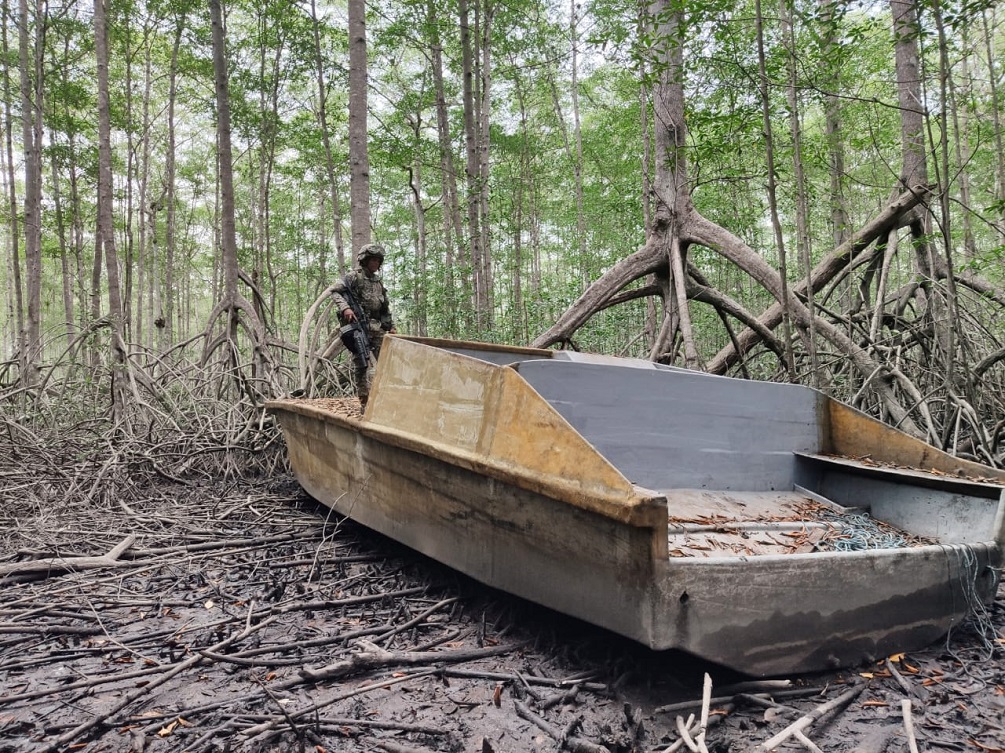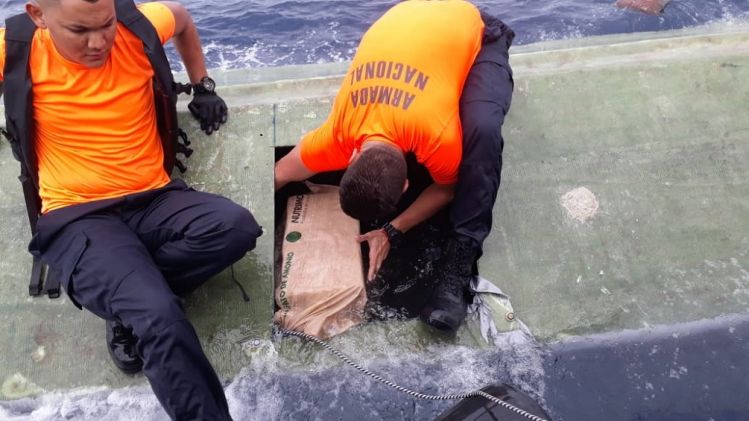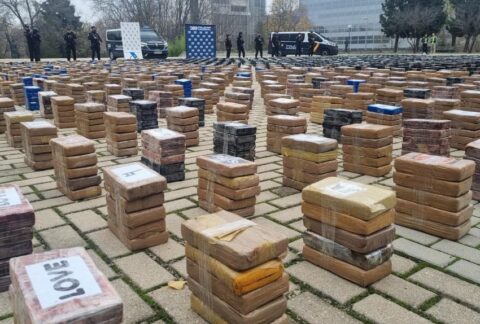On August 30, the Colombian Navy’s Pacific Naval Force destroyed two vessels on land, before they could be launched, capable of carrying 4 to 8 tons of cocaine. On September 20, authorities intercepted another semisubmersible carrying 8 tons of cocaine hydrochloride worth $320 million, with the support of the U.S. Coast Guard.
“We’ve increased the seizure of semisubmersibles; we’ve seized 20 this year. But what’s most important is the combined efforts with countries where the drugs go through, where [narcotraffickers] design new routes,” Colombian Navy Rear Admiral Hernando Enrique Mattos Dager, commander of the Pacific Naval Force’s Poseidon Anti-drug Trafficking Task Force, told Diálogo. “Operations with partner nations are reflected in the results.”
The increase is also due to detection on land, thanks to efficient intelligence work. “Operations at sea are more complex, although we get better results each time, thanks to the support of [U.S.] Southern Command’s units, with maritime patrol aircraft for detection, which receive our information on patrol areas,” Rear Adm. Mattos said.
Semisubmersibles, also known as cocaine subs, are low-profile vessels that cost about $1 million to make. They are handcrafted and designed to navigate about 4 to 8 inches above sea level, which complicates radar and sensor detection. “They feature a cabin for four people: two operators responsible for the engine and controlling water levels, a mechanic, and an individual dubbed ‘the guarantee,’ a member of the narcotrafficking ring who goes along to ensure the drug shipment arrives with a full cargo at its destination,” the Navy said.
There are several semisubmersible models: those that work with diesel and internal engines, equipped with high technology, and even vessels with a fiberglass hull and outboard engines. Developments similar to military submarines have been detected, with autonomy to remain underwater for days and even months.
These vessels are used because they can easily be supplied with fuel and food in open waters. They can leave Colombia and reach Mexico without any logistics setback. Their real problem is the shield formed by nations participating in operations to seize transnational criminals.
“The strategy used nowadays, with more and better aircraft, powerful radars, cameras, etc., facilitates detection, as long as we know where to search. That’s the key,” said Rear Adm. Mattos.

As of September 2019, the Colombian Navy seized nearly 164 tons of cocaine hydrochloride and 24 tons of marihuana. “We deal strategic blows and reaffirm Colombia’s commitment against narcotrafficking,” Colombian President Iván Duque told the press. “Now we can say that more than 40 percent of seizures in the western hemisphere are made by Colombian authorities.”









